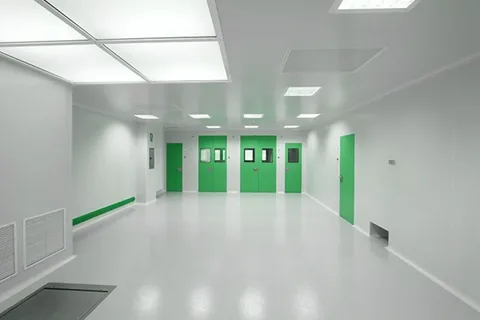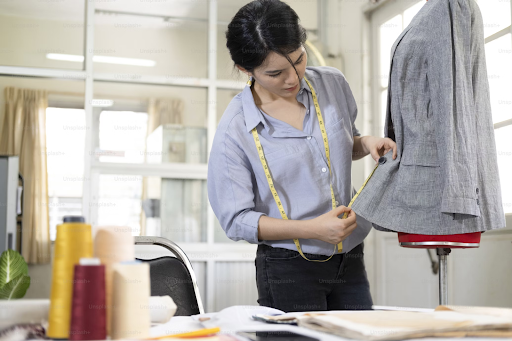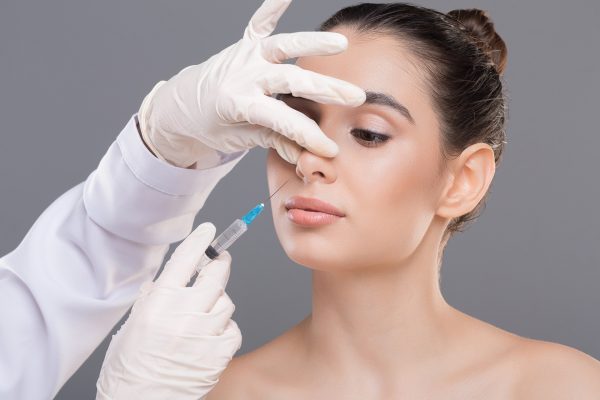When a plastic component, such as an implantable medical device, is being manufactured, it must be kept as clean as possible. A sterile manufacturing environment is required for this component. The term “cleanroom” may describe this kind of setting. The number of airborne contaminants, such as dust and other airborne microbes, per unit volume in a cleanroom is controlled to reduce the likelihood of contamination. These particles are held by a High-Efficiency Particle Air (HEPA) filter, which the cleanroom class changes several times per hour as defined by ISO 14644-1. The HEPA filters the air before it enters the cleanroom.
Cleanrooms determined to keep an item liberated from foreign substances are kept at a positive tension, so particles escape from the cleanest to the most un-clean region. On the other hand, quarantine stations and chemical analysis facilities are cleanrooms where negative pressure is maintained to keep nothing outside.
Parts made of plastic are made in a separate room designed to make it less likely that dust or other particles will get into them. Cleanroom molding is the name given to this method. Parts frequently require sterile manufacturing in the biotechnology, pharmaceutical, and medical industries.
Control of the Environment for Injection Molding in a Cleanroom The ISO 7 and ISO 8 cleanrooms require less risky environments like gynecology, general surgery, patient preparation/awakening corridors, intensive care, and resuscitation. Several checks on the adjustment of the treatment system, airflow, air unidirectional check (where a filtering plenum is present), noise, and smoke test should be performed to guarantee environmental control.
In the required setting, consider the following:
Plenty of airflows: To guarantee that the air is lucid and a tight number of particles are kept up with, class 7 and 8 cleanrooms utilize positive wind current to ensure specific particles.
Utilization of Electric Tools: In most cleanroom environments, electric machines should be used instead of hydraulic engines. This would prevent more airborne particles.
Requirements for Coverage: Engineers and operators must be covered entirely when entering an ISO 7 cleaning room. Shoes, clothing, and inexpensive covers are examples of such covers. In study hall 8, the inclusion necessities might be more rigid.
Bundling Cutoff points: Coated plastic or cardboard packages are standard in a cleanroom. Cleanrooms prohibit packing, including some materials made of corrugated board that have the potential to produce excessive particles.
Post-Molding Operations in a Cleanroom When performing cleanroom injection molding, medical device types must be considered. There are various classes of these medical devices. Additionally, classification is risk-based, meaning that the device’s risk to the patient or user plays a significant role in its category. Class I devices have the lowest risk, while Class III devices have the highest chance.
As demonstrated over, all classes of gadgets are liable to General Controls. The Food and Drug Administration (FDA) Act establishes general controls for all medical devices: I, II, and III.
Depending on the risk, invasiveness, and impact on the patient’s overall health, any medical device approved by the FDA is classified as Class I, II, or III.
Class, I devices have little effect on a patient’s overall health and little contact with them. Such gadgets include oscillating brushes, tongue depressor, breathing apparatuses, reusable careful surgical tools, wraps, clinic beds, etc. They won’t require cleanroom injection molding because this category of devices carries the lowest risk.
Because they are more likely to come into prolonged contact with a patient, Class II medical devices pose a higher risk category than Class I devices. Such gadgets incorporate catheters, circulatory strain sleeves, pregnancy test units, and needles. Despite their moderate complexity, these devices represent a greater risk. As a result, when stricter regulatory controls are implemented, such devices can be guaranteed to be safe and effective. In an ISO 8 cleanroom, most of these devices can be assembled or modeled. Pregnancy testing kits and condoms are two items whose manufacturing processes do not require a clean room injection molding.
Products that “usually sustain or support life, are implanted, or present a potential unreasonable risk of illness or injury” are classified as Class III devices by the FDA. Such gadgets incorporate bosom inserts, pacemakers, defibrillators, and so forth. Due to their complexity and high risk, these devices pose the greatest threat. All instruments in this category are assembled and molded in cleanrooms and are subject to the strictest regulatory controls due to their complexity. The justification behind this is to decrease the defilement rate from airborne particulate.
There are several post-processing operations for plastic injection molding to complete your project and shorten your supply chain.
Medical injection molding, clean room certification, accreditation, and maintaining and regulating pure room protocol are careful considerations. To maintain compliance, clean room injection molders must pay close attention to the following factors:
Quality control systems, such as machine hoods and HEPA filters, that monitor, manage and remove particulates and dust that could otherwise cause the required number of pollution particles to fall short of ISO 7 and ISO 8 clean room specifications.
In the event of repeated cycles, routine checks, customer requests, or procedural deviation, procedure documentation that physically traces the process lifecycle, mold pull cycles, and equipment/product testing is readily available.
Controls the work environment by checking the air’s purity and doing routine, in-depth checks on the equipment to find and deal with production-related contaminants like particulates from ejected parts, peeled or shaved undercuts, and tiny plastic pieces. Additionally, improper machine maintenance can introduce contaminants. Over-lubing parts, for instance, can be incredibly inconvenient.
Implementing specific analysis modules like hazard analysis and critical control point (HACCP), fault tree analysis (FTA), and failure mode and effect analysis (FEMA) is one way to manage risk. Injection molders find acceptable limits and develop consistent contamination control assessments during manufacturing by understanding and evaluating the risks of microorganisms.
Requires traceability for implantable medical products regulated by the FDA and intended to remain in the human body for more than one year, non-implanted life-supporting devices used outside medical facilities, and all other complex applications whose failure would likely also have severe and adverse health effects.
In a clean room, machine operators must fully commit to the procedures because it is unacceptable to cut corners. In addition, to avoid contamination of the injection-molded parts and components and the clean room environments, they must strictly wear protective gear like gloves, gowns, masks, and booties.





